
Producer in Focus
Domaine Milan, Provence, France
Rebels with a cause...
Our story begins driving the treelined roads of Saint-Rémy-de-Provence - as the silhouette of the Alpilles mountain range appears out of nowhere in contrast to the surrounding flat land as they come into view at first light. We're racing against the sun so that we arrive at our destination for golden hour. We pull into the long, sweeping gravel drive and park up outside the old villa, warmly greeted by KiKi, a little grey feline, who is believed to be Théo's grandmother reincarnated.
The pale blue shutters fling open... "morning! do you guys want coffee?" out popped Nathalie, Théo's wife, mother of their two boys, and partner in crime. The former head sommelier at MoMA's two Michelin starred restaurant - The Modern. Nathalie moved to join Théo in St Remy after they met in New York. Théo was keen to meet the person responsible for putting Le Grand Blanc by the glass and rarely was there a tasting menu without Le Carrée on it. Despite his poorly timed arrival in the middle of service on a Friday afternoon, Théo managed to win her over, and the rest is NOW…
With Kiki chaperoning us, jumping from one vineyard to the next, showing us the best way to cross the ditch as we attempted to capture the raw beauty of the wild surroundings that make up Domaine Milan in the glistening morning light.
New ArrivalsFamily Affair
The domaine dates back to 1955 - when Robert Milan, Théo's grandfather, first planted vines after taking his father-in-law’s good advice. As a family of successful lawyers and landowners, he had moved his young family from the Rhône to settle in St Remy. Apparently, he wasn't much of a wine drinker - drinking “only at lunch and dinner”, says Théo. Despite this, aspirations didn't stretch further than selling it to the local cooperative until his youngest son Henri decided to break away from his predestined life of becoming a lawyer. Instead, he and his wife Veronique decided to make wine from the estate and from day one, they worked the land organically, decades ahead of their time, when in 1984, very few were working in such a way.
By the end of the 90s, however, the Les Baux de Provence (A.O.C) was just two producers away from becoming the first appellation in France to become fully organic.
"The classification would have put Les Baux de Provence on the map - can you imagine! And still today, there is nowhere in France where the whole appellation is fully organic, c'est dommage!"
Today the farm is managed using both biodynamic practices and permaculture. Cover cropping is particularly beneficial in helping them to retain water and maintain optimum soil health.
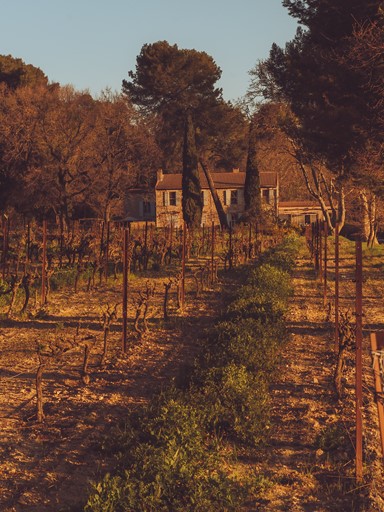
Henri’s Gift
Sitting in the bustling tasting room cum bar, Nathalie explains how lucky they are to have such "beautiful clean soils to work with"- together with Henri's reputation and the community of winemakers that are now his friends and who come together to help each other.
“Nobody hesitates to pick up the phone and call one another. People are generous with their time, whatever the question or the problem. Like Athénaïs de Béru, she is a close friend of ours. Henri mentored her for a short period when she first started out – she's become a great family friend, and we love her wines.”
But perhaps one of the greatest gifts is the freedom to work out of the appellation rules which has allowed Théo and Nathalie to experiment, test, adapt, and continue to hone their craft as artisan vignerons but with a wealth of experience, heritage, and arguably the healthiest soil in the region. Thanks to Henri's determination, against all odds, to work with nature and to nurture the land organically for 35 years before them.
"You really need 20 years of clean farming to be able to make the best wines without sulphites."
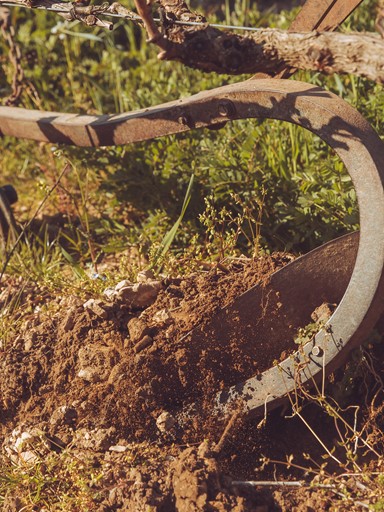
Screw Convention.
White Grapes for Véronique
When we meet, it’s early spring, and they’ve just finished the first sweep of pruning. The vines range from one to forty years old with ten different white varietals. Henri planted these grapes because Véronique didn’t like red wine very much. This move marked the beginning of the end of Henri’s relationship with the Appellation - Baux de Provence.
Despite Henri finally being granted the right to make white wine in 2012, there were still limitations imposed on which varietals could be grown, and this didn’t include Chardonnay - Véronique’s favourite. Now free from the shackles of the AOC rules, Henri has grafted Pinot Noir from his friend Emmanuel Giboulot in Burgundy onto Syrah rootstock, and today Théo makes rosé using carbonic maceration and whole bunch fermentation, as they do in Beaujolais, to create an energetic glou-glou style of rosé - Haru! Meaning sunshine and springtime in Japanese.
“Today, not one of the most famous winemakers in the region is part of the AOC. It’s the snake biting its tail”, shouts Théo, with the passion of a man with Italian roots. Theo tells me that this feeling is spreading across the whole of France.
Even when it comes to bottling, the Milans don’t follow convention - sometimes we bottle one vintage before the other – not in the corresponding order – for example, 2016 could be ready before 2015. “Like being an artist – you decide what goes out when,” says Théo.
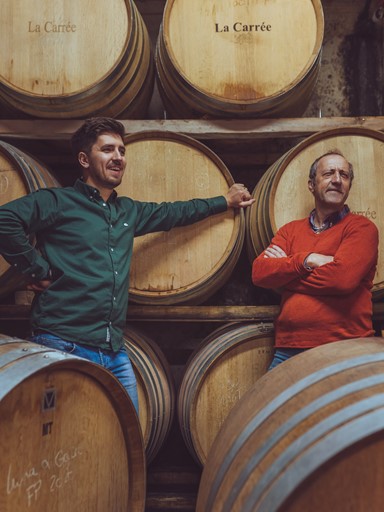
Terroir
A magical place well illustrated by Vincent Van Gogh - Domain Milan is situated on the north side of the Alpilles - surrounded by the garrigue, a low scrubland that forms the Mediterranean woodlands. The Mistral blows down from the Rhône and creates a cooling influence - giving you freshness and acidity in your glass! The blue clay soil, which can also be found in Jura, Burgundy, Alsace and Tuscany, is excellent for holding water and ideal in areas where rainfall is low, and drought is common. "White varietals are best in the clay," says Théo. He recently planted Savagnin, Chenin blanc, Chardonnay, Grenache Gris and Macabeo - "the blue clay gives freshness and a saline, oxidative flavour too. In contrast, the Limestone and Sandstone soils give depth, complexity, and the white wines age really well."
"The definition of 'terroir' is on the one hand very basic and the other very complex. It's what's underneath, what's on top, how is it made and developed; it's your cave. It's everything. It can't be quantified – it's the sum of your surroundings every harvest".
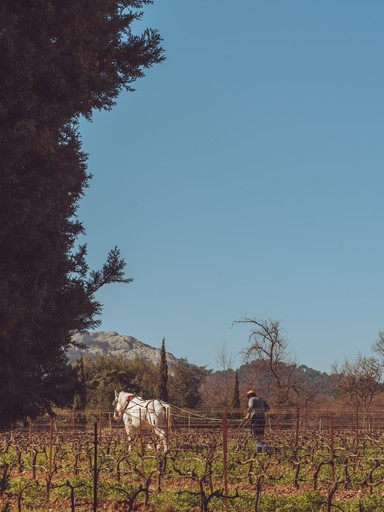
The Future
"Every day, we're learning more - working together and improving, adapting to new varietals that work better as the climate changes," says Nathalie. For instance, Théo and Sebastian, the cellar master, have just returned from a trip to Corsica. They brought back cuttings of Nielluccio - Corsica's name for Sangiovese, which they will graft onto the existing grenache rootstock in the Eyragues vineyards. Théo is also keen to experiment with single varietal wines, and there are talks of a new gravity controlled cellar because they're running out of space! Théo and Nathalie have big plans for the future, whilst continuing Henri's legacy. And one promise that they have made to Henri is to continue to make Le Grand Blanc, Le Jardin and Le Carrée.
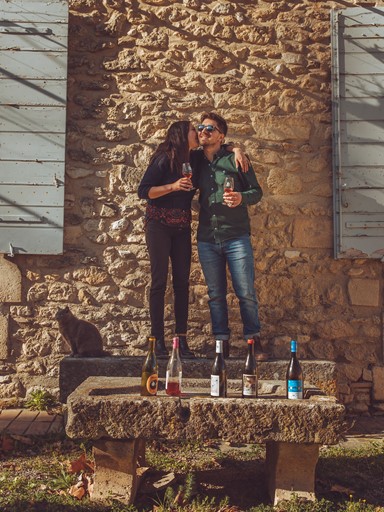
It's a Wrap
Our day in a life at Domain Milan draws to a close in the same way that it began chasing the light. This time surrounded by the three generations, for a family portrait, in the vines outside Henri’s house. But not before a detour to Henri’s listening room to hear Miles Davis at full blast on his new sound system, then back to the tasting room where the whole team and all of the family congregates for apéritif.
This is the Milan philosophy: "sharing is caring".
Photo credit Tom D Morgan
Words by Sarah Jones
New Arrivals from Domaine Milan















